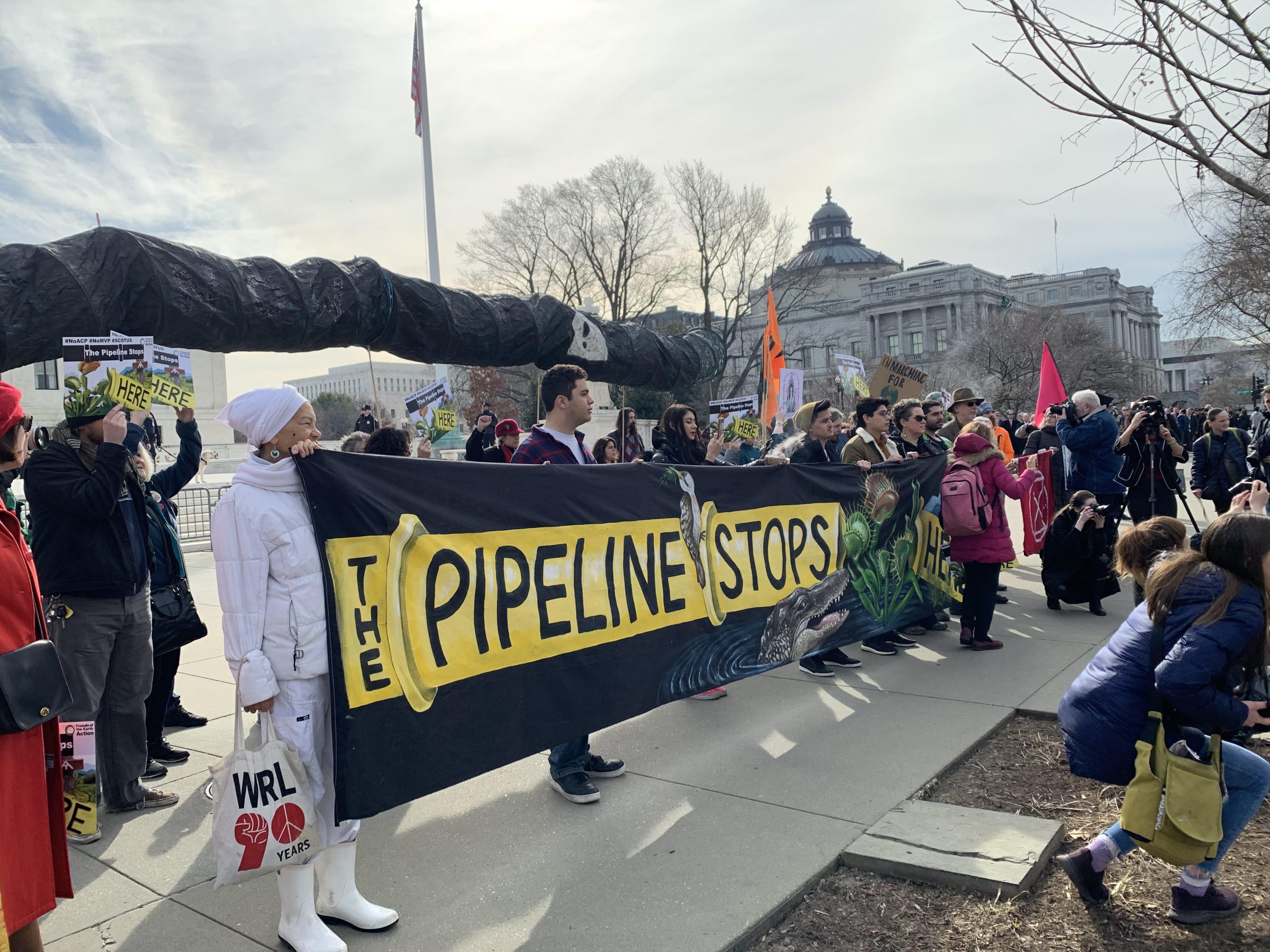Opinion analysis: Appalachian Trail no barrier for major gas pipeline
on Jun 17, 2020 at 2:36 pm

In one of the major environmental cases of the term, the Supreme Court ruled 7-2 this week that the U.S. Forest Service could permit the Atlantic Coast Pipeline to cross underneath the Appalachian Trail in Virginia’s George Washington National Forest. The ruling in the consolidated cases U.S. Forest Service v. Cowpasture River Preservation Association and Atlantic Coast Pipeline LLC v. Cowpasture River Preservation Association lifts one major obstacle to the 600-mile pipeline, which could carry as much as 1.5 billion cubic feet of natural gas per day from West Virginia to buyers in North Carolina and Virginia. Despite Monday’s ruling, the $8 billion pipeline, a joint venture of Dominion Energy and Duke Energy, is still held up in court because the U.S. Court of Appeals for the 4th Circuit has vacated at least seven other permits for the project.
The opinion was written by Justice Clarence Thomas and joined in full by Chief Justice John Roberts and by Justices Stephen Breyer, Samuel Alito, Neil Gorsuch and Brett Kavanaugh. Justice Ruth Bader Ginsburg joined in part. The opinion reversed a 2018 4th Circuit ruling that held that the Forest Service lacked the authority to approve a tunnel underneath the trail because the entire 2100-mile trail was National Park Service land. The legal status of the trail was crucial to the case, and some energy analysts charged that the 4th Circuit had turned the trail into a “Great Wall” that would block most energy infrastructure from the Midwest to the East Coast.
The Appalachian Trail is administered by the Park Service, even where it runs through national forests. It has been officially designated a “unit” of the Park Service, but that status alone does not block pipelines under the relevant statute, the Mineral Leasing Act. That statute prohibits any federal agency from authorizing a pipeline right-of-way through “lands” in the National Park System. The question before the Supreme Court was whether the entire trail is such a “land.”
The court held that the trail is not a “land” in the National Park System but is simply a right-of-way under the administrative supervision of the Park Service. The property at issue remains under the jurisdiction of the Forest Service, and the Forest Service therefore had authority to approve a crossing through a tunnel 600 feet beneath the trail.
After oral argument, I wrote that the justices seemed inclined to rule in favor of the Forest Service on the theory that the Park Service administered the trail but not the land 600 feet beneath the trail. There were long discussions at oral argument about whether agency authority over a footpath extends to the center of the earth.
This week’s opinion, however, drew a different distinction to support the Forest Service’s authority. The court ruled that the Park Service enjoyed an easement under the 1968 Trails System Act to run a footpath over land, but the land itself remained fully under the jurisdiction of the Forest Service. As Thomas put it, easements “are not land, they merely burden land that continues to be owned by another.”
Loaded with citations to state law and scholarly authorities, Thomas’ opinion reads like a treatise on the law of easements. Thomas noted that in granting an easement, the underlying property holder does not give up any rights of ownership or possession:
If a rancher granted a neighbor an easement across his land for a horse trail, no one would think that the rancher had conveyed ownership over that land. Nor would anyone think that the rancher had ceded his own right to use his land in other ways, including by running a water line underneath the trail that connects to his house.
The opinion stressed that Congress did not order a land transfer in the 1968 Trails System Act, but rather merely described the Appalachian Trail as a “right-of-way” through land under the jurisdiction of other agencies. The majority also explained that it was not Congress that gave administrative authority over the Appalachian Trail to the Park Service, but rather the Secretary of the Interior, through delegation. “We will not presume that the act of delegation, rather than clear congressional command, worked this vast expansion of the Park Service’s jurisdiction and significant curtailment of the Forest Service’s express authority to grant pipeline rights-of-way,” the court explained.
Justice Sonia Sotomayor, joined by Justice Elena Kagan, argued in dissent that the majority’s state-law easement analogies are inapposite. Easements are limited access rights granted by one landowner to another, but the federal government owns all the land at issue in this case.
The dissent insisted that the trail can’t be divorced from the land it occupies. After noting that the majority conceded that the Park Service administers the trail, Sotomayor wrote that “the Court does not disclose how the Park Service could administer the Trail without administering the land that forms it.” The job of the court was to parse the relevant statutes to determine what Congress intended. For the dissent, the crucial point was that the Secretary of the Interior had already delegated administration of the trail to the Park Service by the time Congress enacted a statute in 1970 that made all lands administered by the Park Service part of the National Park System. The dissent concluded that the majority opinion was “inconsistent with the language of three statutes, longstanding agency practice, and common sense.”
Although the decision is a victory for the pipeline developers, it does not “green light” the pipeline or end litigation. The Supreme Court’s ruling does not disturb other aspects of the 4th Circuit’s decision, which found that the Forest Service had violated the National Forest Management Act and the National Environmental Policy Act in approving the pipeline’s route through two national forests.


